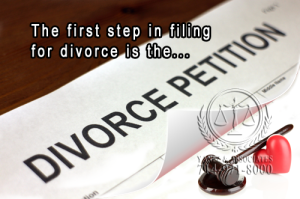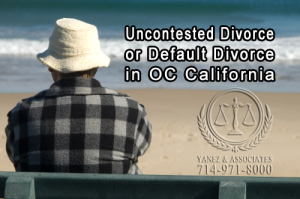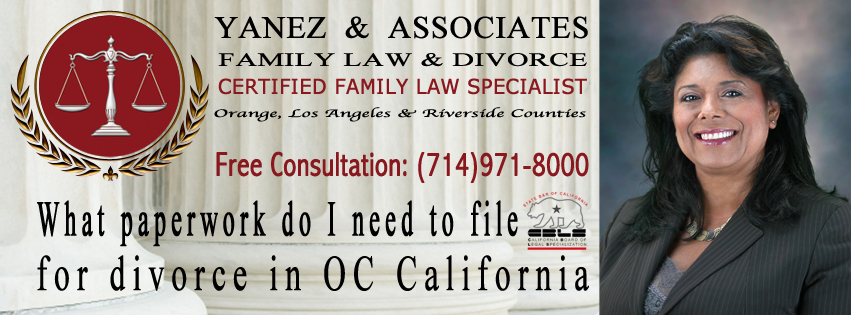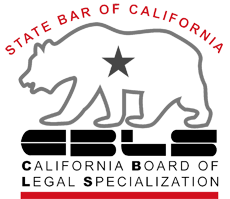What Paperwork do I Need to File for Divorce in the OC?
What paperwork do i need to file for divorce in OC California? When you file for divorce in California, it is always recommended that you consult with a divorce attorney. The following information is provided for reference only, and because every divorce is unique, your attorney can help you determine whether you need all of the following forms, how to fill them out correctly, and where to file them.
The divorce process begins with the petitioner filing the initial forms with the court, and serving these papers upon the respondent. The respondent can choose how to respond to the divorce, and then both parties will submit financial information to the Court. One or both parties will submit a divorce agreement, including the final divorce forms which may vary by divorce, and ultimately, they will receive a final judgment.
The following forms are specific to a heterosexual marriage. If you are in a same sex marriage or a registered domestic partnership, the forms required may vary slightly.
Filing for Divorce: The Petitioner
The first step in filing for divorce is for the petitioner to file:
- A Petition,
- A Summons, and
- If you have children with your spouse, a Declaration Under Uniform Child Custody Jurisdiction and Enforcement Act.
These forms need to be filled out, signed, and submitted to the court clerk.
Process of Service
Under the sixth amendment to the US Constitution, your spouse has the right to know that a legal action involving him or her is taking place. Once the petitioner has filed the initial paperwork, someone who is 18 or older but who is not the petitioner has to serve the respondent, or the other spouse, with the following paperwork:
• A copy of the petition,
• A copy of the summons,
• A copy of the Declaration Under Uniform Child Custody Jurisdiction and Enforcement Act, if applicable, and
• A blank Response form.
After the respondent has been served, the process server, or the person who served the paperwork, has to file a proof of service form with the court. This might be a Proof of Service of Summons form, but there can be other forms depending on the person who served the respondent.
The respondent has 30 days to file and serve a Response on the petitioner. There are several says the respondent can choose to respond.
Disclosure of Financial Information
The petitioner has 60 days from the date that the Petition, Summons, and the Declaration Under Uniform Child Custody Jurisdiction and Enforcement Act are filed to fill out and serve the following financial documents on the respondent.
• A Declaration of Disclosure,
• An Income and Expense Declaration,
• A Schedule of Assets and Debts, or a Property Declaration,
• Copies of all tax returns from the past two years.
If the respondent files a Response (see below) he or she is also required to serve the same documents listed above on the petitioner within 60 days of filing the response. The 60 day time limit for both parties may only be changed by a written agreement between the spouses or their attorneys, or through a court order.
When each party receives the financial documents listed above, they must file a Declaration Regarding Service with the Court. This simply lets the court know that the papers have been received.
Forms for a California Divorce Based on the Response to the Divorce Petitioner
When a Respondent is served with divorce papers, he or she has 30 days and four options for responding to the paperwork. Each method requires different forms on the part of both parties.
Contested Divorce in the OC
When the respondent files a response with the court, but the couple does not have a written, notarized divorce agreement, the divorce is contested. There are various ways to create an agreement, including mediation, collaborative divorce, or litigation. Unless you or your spouse have requested a separate trial, (which is rarely granted), the terms of your divorce will be decided through litigation or a form of alternative dispute resolution, and your divorce can be finalized by completing a Final Declaration of Disclosure.
Uncontested Divorce, or Default Divorce in Southern California
Uncontested Divorce - If the respondent files a response with the court, and the couple has a written, notarized agreement,
Default with Agreement - When the respondent does not respond through the court system, but the spouses have a written agreement, it must be notarized and submitted with the final paperwork.
True Default - If the respondent chooses not to respond at all within 30 days and there is no written agreement between the spouses, the petitioner can move forward with the forms to finalize the divorce.
At least 30 days after the respondent was served with papers, the petitioner can fill out the following forms to finalize an uncontested divorce.
• A Request to Enter Default,
• A Declaration for Default or Uncontested Dissolution,
• A Judgment
• A Notice of Entry of Judgment
• A written, notarized agreement between the spouses, if there is one,
• A Declaration Regarding Service of Declaration of Disclosure, or, if the parties have agreed to exclude this, a Stipulation and Waiver of Final Declaration of Disclosure.
Usually a divorce includes an order regarding the division of community property and debt. If so, some or all of the following forms may need to be attached to your Judgment.
• A Property Order Attachment to Judgment,
• A Property Declaration,
• A Pension Benefits - Attachment to Judgment
If either party is requesting spousal support, the forms below may be necessary, and should be attached to the Judgment.
• A Spousal, Partner or Family Support Order Attachment,
• An Income and Expense Declaration,
• An Earnings Assignment Order for Spousal or Partner Support.
If a child custody order is part of the divorce, the following forms may be necessary, and should be attached to the Judgment.
• A Child Custody and Visitation Order Attachment,
• A Supervised Visitation Order,
• A Child Abduction Prevention Order Attachment,
• A Children’s Holiday Schedule Attachment,
• An Additional Provisions - Physical Custody Attachment,
• A Joint Legal Custody Attachment.
If a child support order is included in the divorce, the following forms may be necessary and should be attached to the Judgment.
• A Child Support Information and Order Attachment,
• An Income and Expense Declaration,
• A Child Support Case Registry Form,
• A Notice of Rights and Responsibilities - Health Care Costs and Reimbursement Procedures and Information Sheet on Changing a Child Support Order,
• An Income Withholding for Support
In some jurisdictions, additional local forms are necessary. Check with your Southern California divorce attorney to make sure you have filled out all appropriate forms. It is always in your best interest to have an attorney review all forms before submitting them as well.
Always make two copies of all forms: one for you and one for your spouse. The court will keep the originals. Submit the forms and copies to the Court with two large envelopes with postage, and file the Proof of Service of Summons and the Declaration Regarding Service of Declaration of Disclosure.
If the paperwork is completed correctly, the judge will sign the Judgment and you will receive a Judgment of Notice of Entry of Judgment in the mail.
A true default divorce will end here. In some cases, you will need to complete the Final Declaration of Disclosure in order to finalize your divorce.
Divorce Attorney in the OC will help you with your question on, "What paperwork do I need to file for divorce in OC California"
If you have questions about the divorce process, or about what paperwork you need, how to fill it out, or how and where to submit it, an Orange County Divorce lawyer can help. Contact Yanez & Associates today to schedule your free initial consultation.












